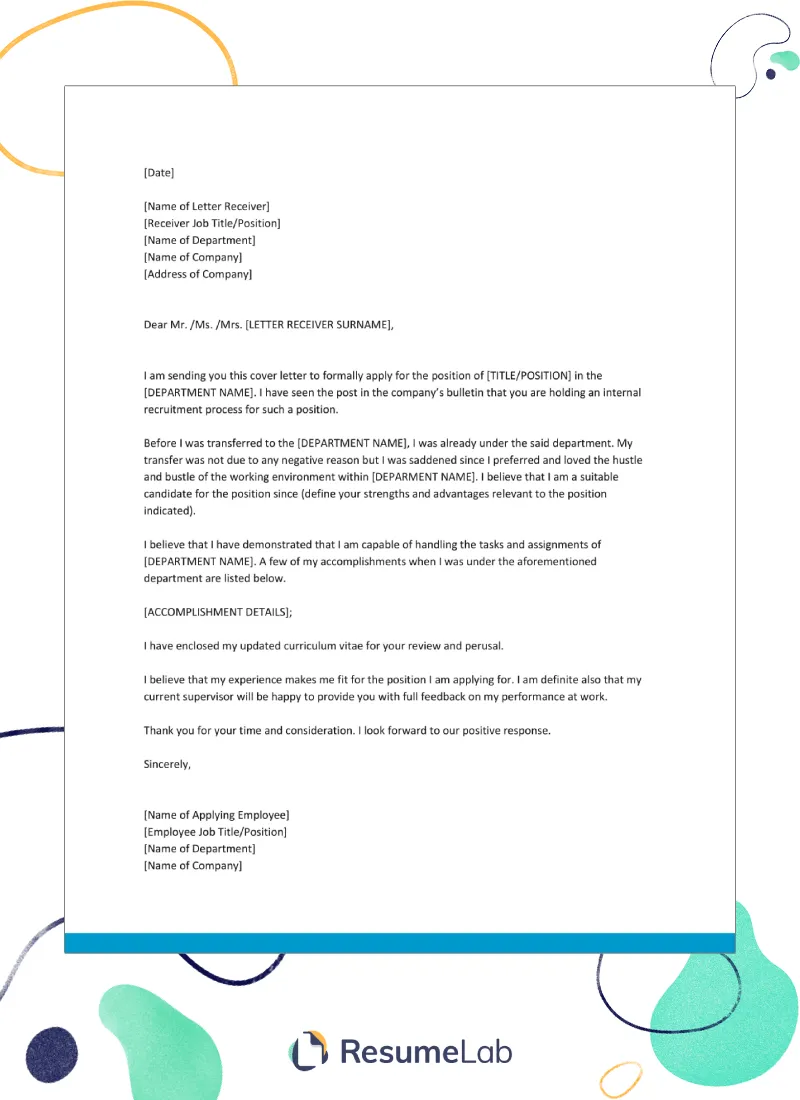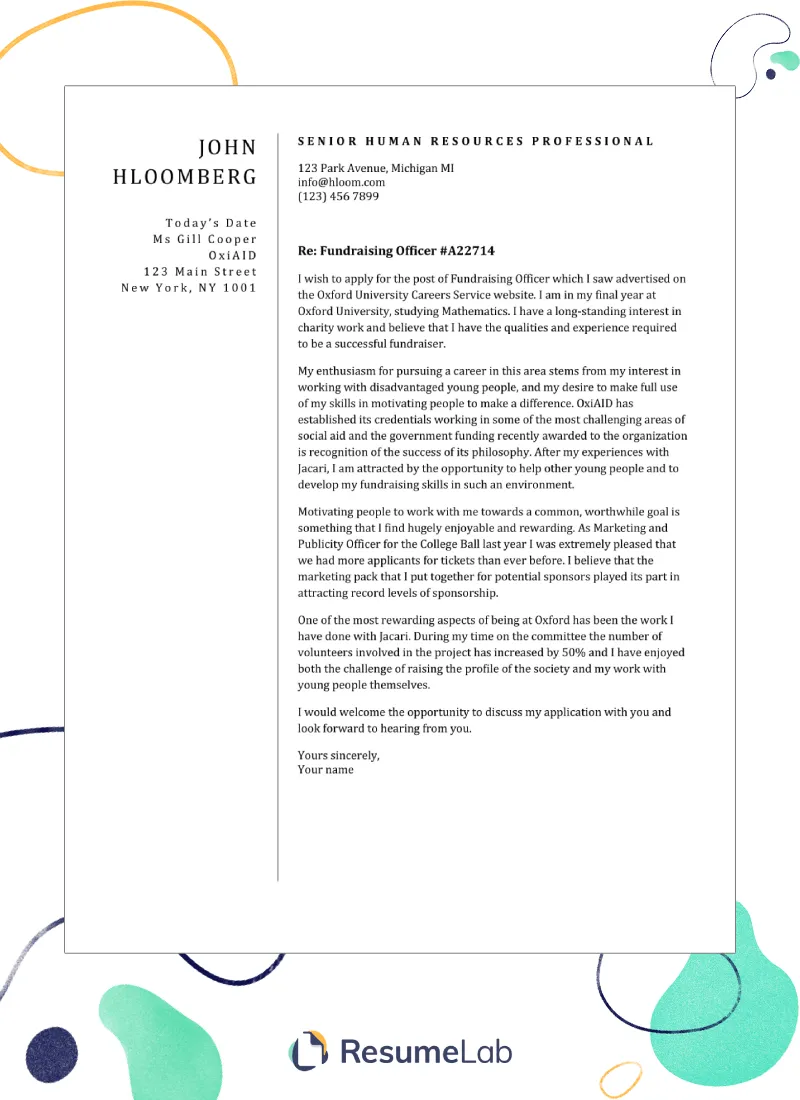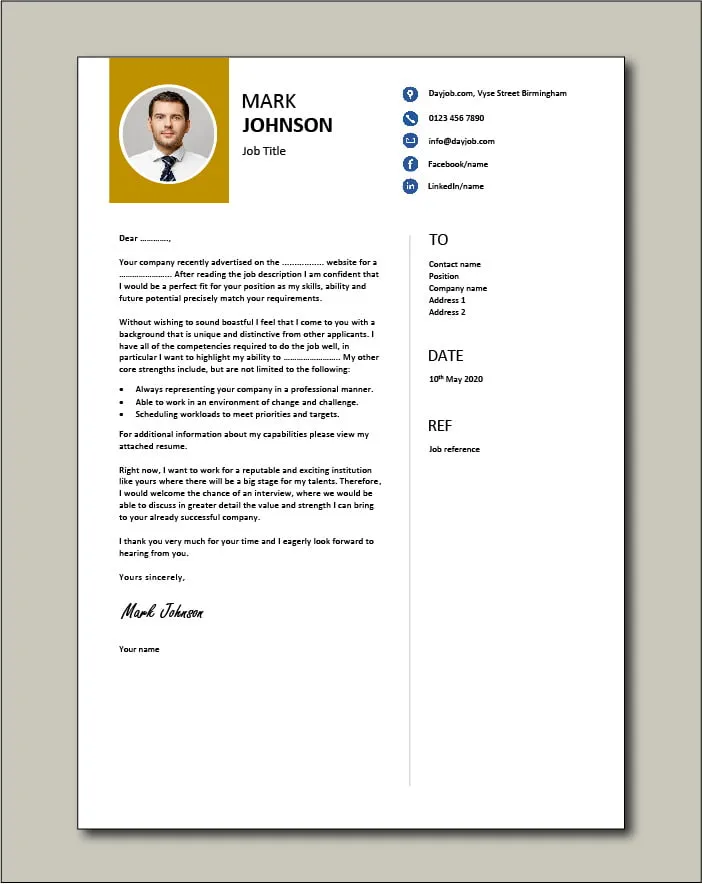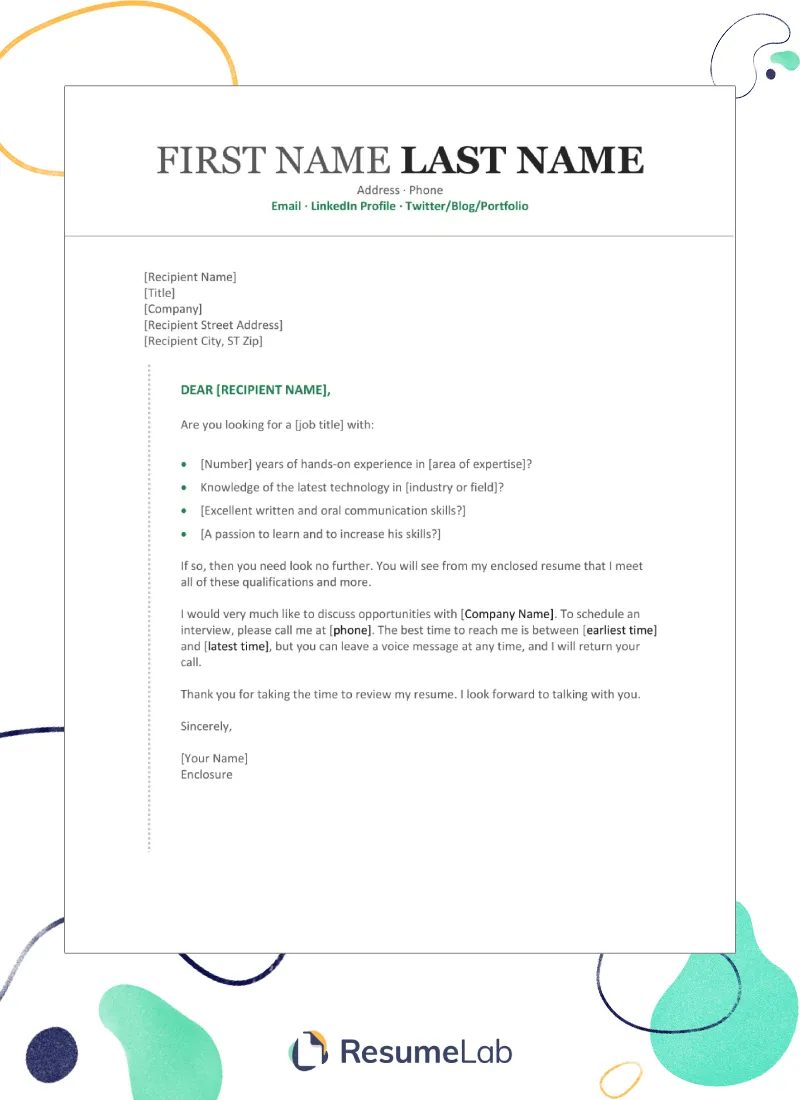What is a Cover Letter and Why Do You Need One?
A cover letter is a crucial document that accompanies your resume when applying for a job. It serves as an introduction, allowing you to showcase your personality, skills, and enthusiasm for the position and the company. Unlike a resume, which provides a summary of your qualifications, a cover letter enables you to elaborate on your experiences, explain why you’re a perfect fit, and demonstrate your communication skills. In today’s competitive job market, a well-crafted cover letter can significantly increase your chances of landing an interview, making it an essential part of your job application strategy. It provides the opportunity to connect with the hiring manager on a more personal level and highlight your unique value proposition.
Many job seekers underestimate the importance of a cover letter, often neglecting to tailor it to each specific job application. This is a significant mistake. A generic cover letter, or worse, no cover letter at all, can signal a lack of interest or effort, immediately putting you at a disadvantage. A cover letter allows you to provide context to your resume, address any potential gaps in your employment history, and explain why you are specifically interested in the role and the company. It’s your chance to make a strong first impression and convince the hiring manager that you’re worth a closer look.
Key Elements of a Cover Letter
A compelling cover letter includes several key elements that work together to create a persuasive argument for your candidacy. First and foremost, you need a professional header including your contact information and the date. Following the header, you should address the hiring manager by name whenever possible; researching their name demonstrates initiative and attention to detail. The body of the letter should be divided into distinct paragraphs, each serving a specific purpose. The introduction grabs the reader’s attention, the body highlights your relevant skills and experience, and the conclusion reiterates your interest and includes a call to action. The tone should be professional yet engaging, reflecting your personality while maintaining a formal approach.
Your cover letter should focus on demonstrating how your skills and experience align with the job requirements. Use specific examples from your previous roles to illustrate your achievements and contributions. Quantify your accomplishments whenever possible; for instance, instead of saying you ‘improved customer satisfaction,’ state that you ‘increased customer satisfaction scores by 15%.’ Tailor your letter to each job application, making sure to highlight the aspects of your background that are most relevant to the specific role. Proofread your letter carefully for any grammatical errors or typos, as these can undermine your credibility. A well-structured and error-free cover letter is a testament to your professionalism and attention to detail.
Cover Letter Format & Structure

The format of your cover letter is just as important as its content. Begin with a professional header that includes your name, address, phone number, and email address. Follow this with the date and the hiring manager’s name and title, along with the company name and address. The body of your cover letter should be structured with clear paragraphs, making it easy for the reader to follow your arguments. Use a standard business font such as Times New Roman, Arial, or Calibri in a 10- or 12-point size to ensure readability. Maintain consistent formatting throughout the document, including spacing and indentation. A well-formatted cover letter demonstrates your organizational skills and respect for the reader’s time.
The structure typically follows a standard format, starting with an introduction that grabs the reader’s attention and states the position you’re applying for. The body paragraphs should highlight your relevant skills and experiences, providing specific examples to support your claims. Use action verbs to describe your accomplishments and quantify your results whenever possible. The conclusion should reiterate your interest in the role, summarize your key qualifications, and include a call to action, such as expressing your eagerness to discuss your application further and providing your contact information. Proofread your letter meticulously to ensure there are no grammatical errors or typos.
Free Cover Letter Templates & Resources
Fortunately, you don’t have to start from scratch when writing a cover letter. Numerous free cover letter templates and resources are available online to guide you through the process. Websites like Zety, Resume.io, and Canva offer a wide variety of customizable templates that you can adapt to your specific needs. These templates provide a pre-formatted structure, making it easier to organize your thoughts and ensure you include all the essential elements. Use these resources as a starting point, tailoring the content to reflect your individual skills and the requirements of the job you’re applying for. Remember to personalize the template to match your unique style and the company’s branding.
In addition to templates, many websites also offer cover letter writing guides and examples. These resources provide valuable insights into the best practices for writing a compelling cover letter, including tips on how to address the hiring manager, highlight your achievements, and tailor your letter to specific job descriptions. Take advantage of these resources to learn from the experts and improve your writing skills. Consider using a cover letter builder, which is a tool that guides you through the process step-by-step, helping you create a polished and professional cover letter. Explore different template options and choose one that best suits your personality and the job you’re targeting.
Writing a Compelling Cover Letter Introduction
The introduction is your opportunity to make a strong first impression. It should immediately grab the reader’s attention and clearly state the position you are applying for. Avoid generic opening lines like ‘I am writing to express my interest…’ Instead, try to personalize your introduction. If you were referred by someone, mention their name. If you are excited about the company’s work, express your enthusiasm. Consider using a brief anecdote or a compelling statement that highlights your unique value proposition. The introduction should also briefly summarize your key qualifications and why you believe you are a good fit for the role.
Keep your introduction concise and to the point, typically no more than three or four sentences. The goal is to capture the reader’s interest and encourage them to continue reading. Make sure your introduction aligns with the job description and highlights the skills and experiences most relevant to the role. Research the company and tailor your introduction to demonstrate your understanding of their mission and values. A well-crafted introduction sets the tone for the rest of your cover letter and convinces the hiring manager to learn more about you. Avoid clichés and focus on making a memorable first impression.
Highlighting Your Skills and Experience

The body of your cover letter should elaborate on your skills and experience, providing specific examples to support your claims. Carefully review the job description and identify the key skills and qualifications the employer is seeking. Then, for each skill, provide a brief story or example that demonstrates how you have successfully used that skill in the past. Quantify your accomplishments whenever possible. For example, instead of saying you ‘managed a team,’ state that you ‘managed a team of 10 employees, increasing productivity by 15%.’ Use action verbs to describe your accomplishments and demonstrate your ability to achieve results. Highlight your most relevant experiences and tailor your examples to the specific requirements of the job.
Focus on demonstrating the value you can bring to the company. Explain how your skills and experience align with the company’s needs and how you can contribute to their success. Use clear and concise language, avoiding jargon or overly technical terms unless it’s appropriate for the industry. Tailor your letter to match the company’s culture and values. Use a professional yet engaging tone that reflects your personality while maintaining a formal approach. Remember, your cover letter is an opportunity to sell yourself and convince the hiring manager that you are the best candidate for the job.
Showcasing Your Value Proposition
Your value proposition is the unique set of skills, experiences, and qualities that you bring to the table. Your cover letter should clearly articulate what makes you stand out from other candidates and why the company should hire you. This involves identifying your key strengths and demonstrating how they align with the job requirements and the company’s goals. Think about what makes you different and how your contributions can benefit the organization. Do you have a proven track record of exceeding expectations? Are you an expert in a specific area? Do you have any unique skills or experiences that set you apart?
Clearly communicate your value proposition in a way that is compelling and easy to understand. Use specific examples to illustrate your achievements and demonstrate how you have delivered results in the past. Quantify your accomplishments whenever possible to provide tangible evidence of your value. For instance, instead of saying you ‘improved customer service,’ state that you ‘reduced customer complaints by 20%.’ Tailor your value proposition to the specific needs of the job and the company. Research the company and identify their priorities, and then demonstrate how your skills and experience align with their goals. Emphasize your passion for the company and the role, and make it clear why you are the best candidate for the job.
Cover Letter Conclusion & Call to Action
The conclusion of your cover letter is your final opportunity to make a lasting impression. It should reiterate your interest in the role, summarize your key qualifications, and include a clear call to action. Express your enthusiasm for the position and the company, and thank the hiring manager for their time and consideration. Briefly restate your most relevant skills and experiences, emphasizing why you are a strong fit for the role. Ensure the conclusion is concise and to the point, leaving the reader with a positive and memorable impression.
The call to action is a crucial element of your conclusion. It encourages the hiring manager to take the next step, such as scheduling an interview. Include a direct and confident statement, such as ‘I am eager to discuss my qualifications in an interview.’ Provide your contact information again to make it easy for the hiring manager to reach you. Avoid ending your cover letter with a passive statement like ‘I look forward to hearing from you.’ Instead, take the initiative and actively encourage the hiring manager to contact you. Proofread the conclusion carefully to ensure it is free of any errors and reflects your professionalism and enthusiasm.
Cover Letter Examples and Samples

One of the best ways to learn how to write a compelling cover letter is to review examples and samples. Numerous resources provide examples of cover letters for various industries and job types. Websites like Indeed, LinkedIn, and The Muse offer sample cover letters that you can use as a reference. These examples illustrate different formats, styles, and approaches, providing valuable insights into how to effectively showcase your skills and experience. Pay attention to how the writers tailor their letters to specific job descriptions and how they highlight their key accomplishments.
When reviewing cover letter examples, focus on understanding the structure, content, and tone. Analyze how the writers introduce themselves, highlight their skills, and conclude their letters. Consider how the examples are tailored to the specific jobs and industries. Use these samples as a starting point, adapting the content to reflect your own experiences and the requirements of the jobs you’re applying for. Remember to personalize each cover letter to match the job description and the company’s culture. Avoid simply copying and pasting from the examples. Instead, use them as inspiration and guidance, ensuring that your cover letter is unique and reflects your personality and qualifications.
